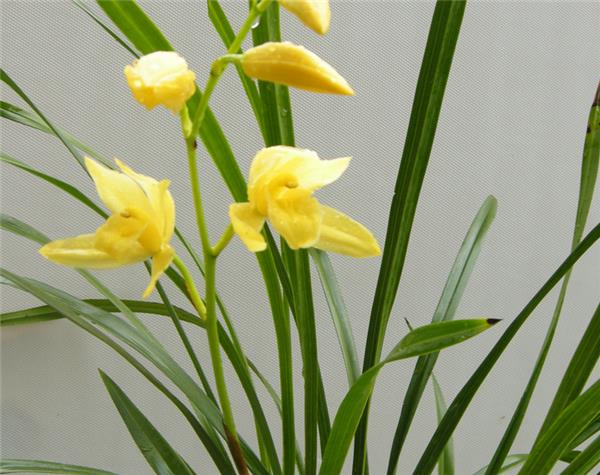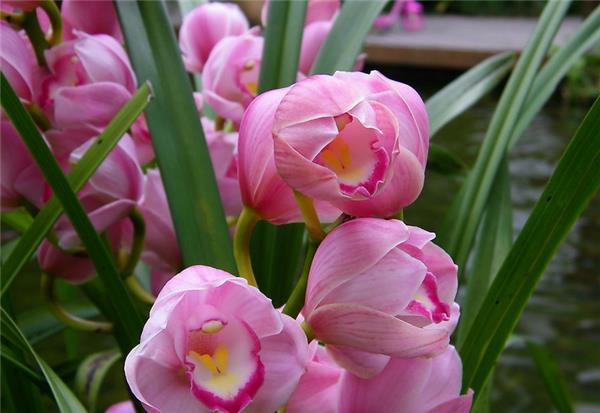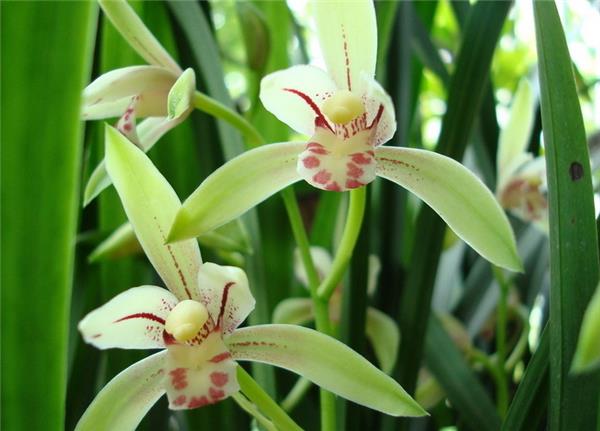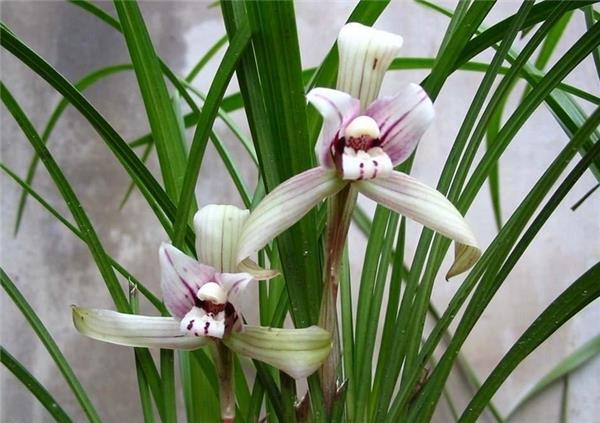How to raise bluegrass
Today we would like to introduce to you the problem of how to raise bluegrass. If you want to grow bluegrass well, you must master the management of watering, fertilization and diseases and insect pests. If you are interested, let's have a look.

How to raise bluegrass
1. Soil selection for bluegrass culture
Orchid grass soil should be mainly humus, mainly humus soil or mountain forest humus soil. In the south, humus soil of origin, commonly known as bluegrass mud, can also be used to artificially prepare loose, aerated and permeable culture soil with saprophyllite, vermiculite and perlite. Generally, 8 parts of rotten leaf soil and 2 parts of river sand were mixed into culture soil, or 7 parts of rotten leaf soil, 2 parts of perlite, 1 part of river sand mixed culture soil, or 6 parts of rotten leaf soil (peat soil), 3 parts of compost soil and 1 part of river sand mixed culture soil. All the above culture soils are slightly acidic.
two。 Fertilization methods for bluegrass culture
Bluegrass fertilization, one is to apply base fertilizer in the cultivated soil, and the other is to topdressing during the growing period. Topdressing often uses liquid fertilizer or foliar fertilizer, and its concentration should be lighter than that of other flowers. The culture soil of bluegrass is changed once a year, topdressing can be reduced during the growth period, and attention should be paid to timely. Generally, in the growing season, about 15% of fully mature thin cake fertilizer water can be applied, or 0.1% urea fertilizer water plus 0.2% potassium dihydrogen phosphate fertilizer water, once every 15 days; before flowering to the flowering stage, 0.2% potassium dihydrogen phosphate or plant ash water can be sprayed on the leaf surface for 2 times to promote the development of roots, stems and flowers. Bluegrass is a fleshy root, do not apply unripe fertilizer, so as not to rot the root.

3. Watering method of bluegrass culture
Watering bluegrass should be determined according to species, growth conditions and local climate, to be moist but not wet, dry but not dry; watering should not be too much or too little, and grasp the principle of not drying in autumn and not wet in winter. When the temperature is low in winter, the plant is in a dormant state, so watering should be controlled. Generally, it can be watered every 5-7 days, but the flowering magnolia in winter needs more water.
Water is watered every 2 to 3 days in spring and autumn, and the temperature is high in summer, which is the peak growth period of bluegrass, with an average of 1 to 2 times a day. When watering, we should pay attention to prevent water spots from splashing on the leaves, so as not to appear black spots and affect the ornamental effect. During the growth period of bluegrass, we should often spray water on the leaves and sprinkle water on the ground around the flowerpot in summer to increase air humidity and promote the growth and development of bluegrass. Rain Water and Xueshui are the best water for watering bluegrass. If tap water is used, it should be stored for 2-3 days.

4. Temperature requirements for bluegrass culture
The potted bluegrass in the north should be moved into the room when the temperature dropped to 5 ℃ before and after the Frost Festival, and the windows should be opened frequently at the initial stage of entering the house to maintain ventilation. It is suitable to keep the room temperature about 10 ℃ in winter. Grain Rain later moved to the outside for maintenance. The suitable temperature for the growth of bluegrass is 16: 24 ℃, and the indoor temperature is generally low in winter, 10: 12 ℃ in the daytime and 5: 10 ℃ at night, the temperature and humidity should not be too high, and the temperature in summer should not exceed 30 ℃.
5. Light requirements of bluegrass culture
Bluegrass likes shade and is afraid of bright light, so it should be shaded in spring, summer and autumn. The family raises orchid grass, in order to control the amount of light, it is best to put it on the balcony window sill or under the eaves with bamboo shade, generally shade from 9 am to 6 pm, and open the curtain after 6 pm in the morning and after 6 pm to make it accept scattered sunlight. In winter, it should be moved to the place where the scattered light is visible indoors, but direct sunlight should also be avoided. The shade tolerance of Cymbidium was the strongest, followed by Jian Lan, while Chunlan and Cymbidium were weaker.

6. The pot method of bluegrass culture
The environment of cultivated bluegrass should be well ventilated, moist and pollution-free. The orchid basin should choose the high basin. The upper part is thick and the lower part is thin, with multiple drainage holes, or the basin wall is provided with drainage holes. The orchid pot itself should also have ornamental value.
Due to the slow growth of bluegrass, the pot can be changed every 1 ~ 2 years after flower fade. When putting on the basin, fill the bottom of the basin with tile grains, slag and so on about 3 cm, in order to facilitate drainage. Then, put into a layer of culture soil, and then put the orchid seedlings into the middle of the basin, straighten the roots and let them stretch naturally. Gently lift the orchid seedlings in the middle of the filling, shake the flowerpot at the same time, so that the soil is closely combined with the roots, and fill the soil 2'3 meters away from the mouth of the pot. just press it gently with your hand. After planting, pour water thoroughly and put it in a cool place, spray water once every morning and afternoon, and move to a shady place with flowers for maintenance after about 7-10 days.
Related
- Wuhan Hospital Iron Tree Blooming Result Was Instantly Frightened by the Gardener Master
- Which variety of camellia is the most fragrant and best? Which one do you like best?
- What is the small blue coat, the breeding methods and matters needing attention of the succulent plant
- Dormancy time and maintenance management of succulent plants during dormancy
- Minas succulent how to raise, Minas succulent plant pictures
- What are the varieties of winter succulent plants
- How to raise succulent plants in twelve rolls? let's take a look at some experience of breeding twelve rolls.
- Attention should be paid to water control for succulent plants during dormant period (winter and summer)
- Watering experience of twelve rolls of succulent plants
- Techniques for fertilizing succulent plants. An article will let you know how to fertilize succulent plants.



